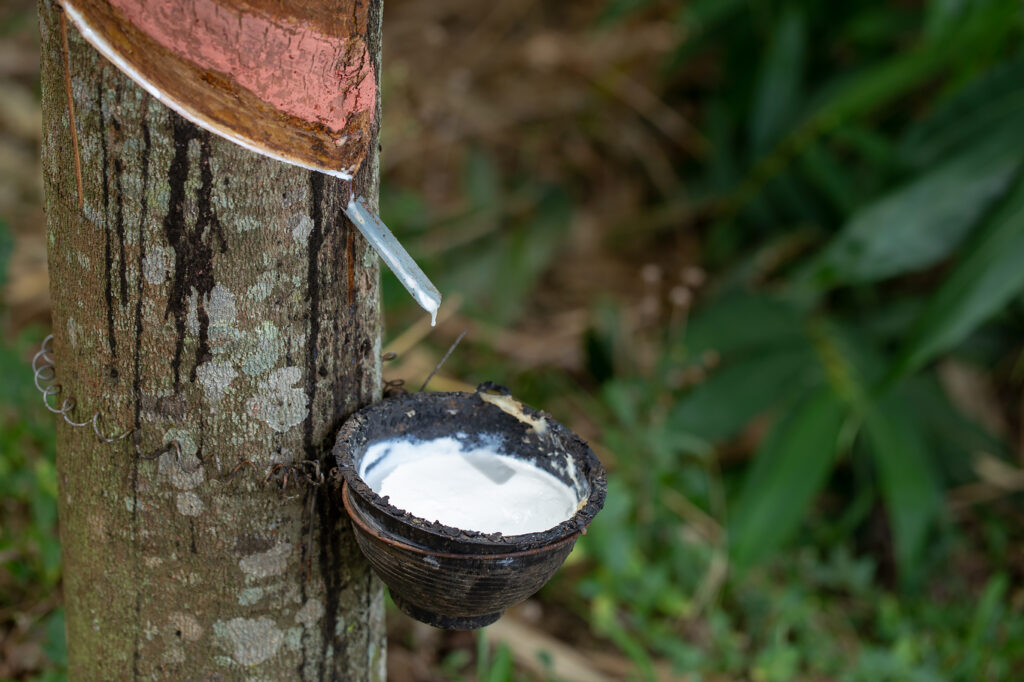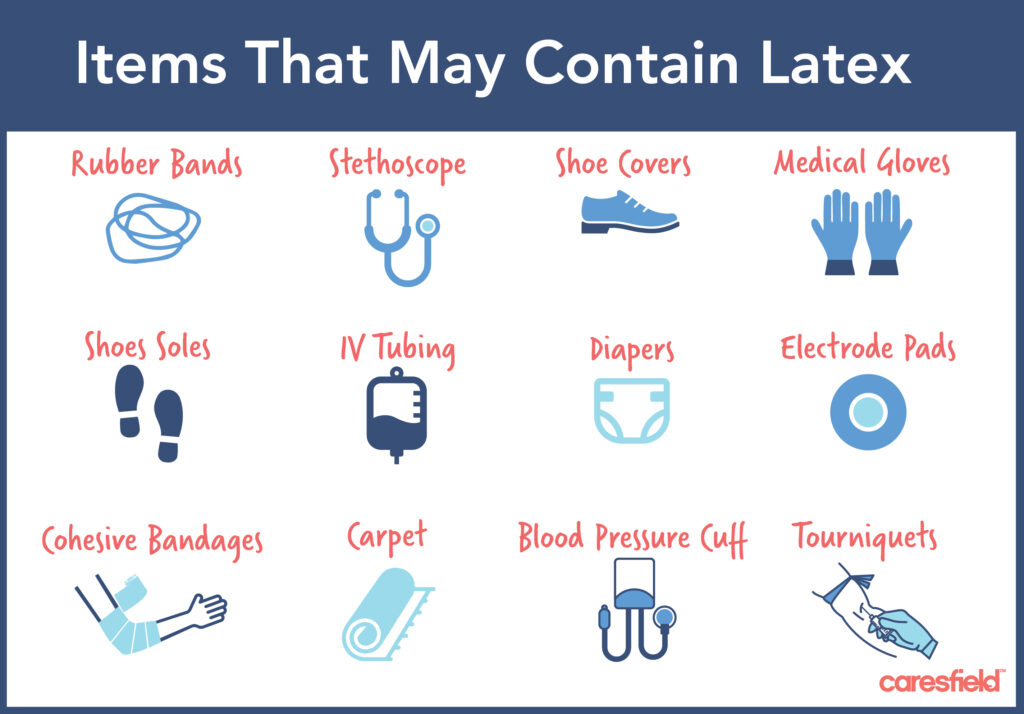12 million tons of natural rubber latex are produced annually for use in consumer products such as balloons, mattresses, tires, shoes, and more. Approximately 2,000 latex products are used in healthcare settings, despite latex allergies. While many hospitals have made the move to non-latex products, it is often difficult to determine if items labeled “latex-free” are accurate.
Many doctor’s and dentist offices continue to use latex products. One reason may be due to cost. Latex is often cheaper than alternative products. And some alternative products such as vinyl loses its barrier against pathogens after rigorous use. This leaves healthcare workers vulnerable to infection. How serious are latex allergies, which populations are most at risk, and how can allergic reactions best be prevented?
What is Latex and What Causes Latex Allergies?
Natural rubber latex is a milky fluid found in rubber trees, which are native to Brazil, though most latex is harvested from countries on the pacific rim. Natural rubber latex contains over 200 different proteins with only a few causing allergic reactions. Latex is also treated during the manufacturing process with products that have the potential to spark allergic reactions.

Who is Most at Risk for Latex Allergies?
Latex allergies affect only 1-5% of the general population. Healthcare workers are at an increased risk with 8-12% presenting with a latex allergy. The following categories describe those who are most at risk.
Surgical patients. Anywhere from 20-65% of spina bifida patients may have a latex allergy. Along with frequent surgical procedures required early in life, they also have a genetic sensitivity to latex. Those who undergo urologic surgeries or require catheterizations are at an increased risk due to latex contact with mucous membranes.
Skin or other allergic sensitivities. Those with a predisposition to other allergic conditions are more likely to have a sensitivity to latex. This can include conditions such as asthma, hay fever, atopic dermatitis, or allergies to medications.
Food allergies. People with specific food allergies are at risk for latex allergy symptoms. One study showed that 50% of patients with a natural rubber latex allergy developed symptoms after eating a banana. Other foods with an allergic correlation are figs, tropical fruits, and avocado.
Healthcare Professionals and Latex Allergies
Latex gloves were first introduced into healthcare in 1890. Latex glove use skyrocketed in the 1980s during the HIV/AIDS epidemic leading to an increase in latex allergies. Gloves are now an essential component of personal protective equipment and are vital in preventing the transmission of infectious diseases. It’s possible that medical professionals are in contact with latex products more than they are aware. This increased usage creates a higher sensitivity to latex and the formation of a latex allergy.
Symptoms and Testing of Latex Allergies
Sensitization to latex can occur after skin or mucosal contact, peritoneal contact during surgery, and inhalation of aerosolized latex substances such as from powdered latex gloves. Reactions are classified into two categories: delayed and immediate. Symptoms can range from mild to severe.
Delayed hypersensitivity is usually observed 24-48 hours after exposure. This is where the manufacturing substances mentioned before come into play, as they are the likely culprit for this type of reaction. Depending on the method of exposure (skin contact with gloves or bandages or inhaling substances) symptoms can present as a rash, skin redness or itchiness, coughing, sneezing, or watery eyes.
Immediate hypersensitivity is less common but much more serious as it is a systemic reaction to latex. This poses the threat of anaphylaxis and symptoms of wheezing, difficulty breathing, and loss of consciousness. These are life-threatening and require immediate attention.
Types of Latex Allergy Testing
Skin prick testing. A small drop of diluted latex extract is placed on the skin and the skin is then pricked with a needle. A reaction will form within 15-20 minutes and is graded by the diameter of redness and swelling to the area.
“Use” testing. This requires placing gloves onto the fingers and hands to determine if an allergy exists. A non-latex glove is used as a control while a natural rubber latex glove is first placed onto one finger and if negative after 15 minutes, the entire hand to assess for a reaction.
In vitro testing. Blood samples can be tested to see if they are positive for sensitivity to latex protein, though this does not necessarily mean a patient will have an allergic reaction to latex.
How to Prevent Latex Allergies
Latex is not recommended in healthcare settings and most latex products have been eliminated over the years and replaced with non-latex options. Unfortunately, the FDA states there is no sure-fire way to ensure products are 100% latex free.

The first step in preventing a latex allergy is education. Being aware of products that can contain latex and avoiding them is crucial. Common items such as rubber bands, shoe soles, carpeting, diapers, and even the elastic on undergarments may contain latex.
Healthcare workers should be aware of all medical products that may contain latex, for the safety of themselves and their patients. This can include stethoscopes, blood pressure cuffs, IV tubing, electrode pads, shoe coverings, and much more. Healthcare workers are at an increased risk over the general population of developing a latex allergy. For this reason, it is highly recommended that facilities, clinics, and doctor’s offices switch to non-latex options. Healthcare workers that have a known latex allergy should be provided with non-latex glove alternatives such as vinyl, nitrile, or other synthetic gloves and the ability to work in a “latex-safe” environment.
How Caresfield Prevents Latex Allergies
Caresfield is proud to manufacture and distribute a wide variety of non-latex products. Options include nitrile and powder-free gloves, disposable tourniquets, cohesive bandages, and even patient ID wristbands made without natural rubber latex. We understand the necessity of offering products not manufactured from latex to protect healthcare professionals and the patients they care for.
Maegan Wagner, BSN RN CCM has over 10 years of healthcare experience. Her nursing career has led her through many different specialties, but her passion lies in educating through writing for other healthcare professionals and the general public.



